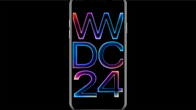
Jump to- |
| Finder Tabs and Tags |
| Notifications |
| Multiple Displays |
| Safari |
| Calendar |
| Maps |
| iBooks |
| Performance Optimizations |
| Closing Thoughts |
At WWDC keynote, Apple unveiled an update to both its mobile and desktop OS- iOS and Mac OS X. We’ve already covered new iOS and its features by comparing iOS7 beta with its predecessor iOS 6 and similarities/ differences between iOS 7 beta, Android, Blackberry and WP OS. Today, we are doing an in-depth review of Mac OS X 10.9, also called as Mavericks (Unlike previous Mac OS names which were based on Cat names like Leopard, Mountain Lion, etc., this version is named after a beach in California).
It must be noted that OS X 10.9 is more of a evolution and not a major update. It hasn’t got much cosmetic changes or even new functionalities like we’ve seen in iOS 7 comparing to iOS 6, but Apple did add several useful features and much needed performance optimizations. Let’s see how much difference these additions make in real world-
Table of Contents
Finder Tabs and Tags
In Mac OS, Finder is used for accessing files and folders on the system. For the new version, Apple did not introduced any drastic change to ways of organizing these files and folders, but it did add some nifty features which were inspired from modern day browsers. We might not even remember that accessing multiple websites simultaneously has become a part of our habit and tabs in the browsers makes it very easier to switch between any of them, without even leaving the window. Finder Tabs does exactly the same and comes in handy when we are checking files in multiple folders or when we’ve to move files between them, which is now as simple as drag and drop from one tab to the other. To open any folder as a tab, Command + double-click on it. Similar to a browser interface, one can open a new tab which opens All My Files by default and even move tab to a different Finder Window. As you open more and more tabs, managing them would become cumbersome, hence one can go to Windows > Merge All to merge them into tabs.
Tags as the name suggests can prove to be really fast and efficient method for searching for folders/ files. It may not seem useful at first as one has to spend some time to tag the folders on the basis of some convention to signify its contents, but eventually it will prove to be time-saver in long run for quickly finding folders/ files. By default, OS X 10.9 provides tags on the basis of colours- Red, Blue, Yellow, Green, Grey, etc., although user can create more tags. One can either right click the folder/ files or select Edit Tags option at the top to assign tag(s). Then whenever you’re looking for something specific and you might not remember where it is, then you can simply click the respective tag to show all the folders/ files in it.
Another feature borrowed from Browsers in Finder is that now it can be opened in Full Screen view. Though, we don’t think one will find too much use of such functionality.
Notifications
Major push to notifications came in OS X 10.8 (Mountain Lion) version, but only baffling thing about those notifications were that even after seeing the notifications, you would have to open the respective app and take the required action. In Mavericks, Apple has added support for its Mail and Messages app to reply directly from within the notification. One can also delete Mail and Message alerts right from the notifications. Apple has also given option to set update of apps automatically, which will be done in the background and user will get a notification once it’s done. Other notifications will continue to come in similar manner and clicking on them will take user to the respective app. These notification will also come in lock screen, so that users find all the alerts whenever the system is awaken from sleep.
Another interesting thing is that Apple has allowed the notifications to come from websites as well. Though, this feature wasn’t live when we tested, but it could be really useful for getting sports update, stock market information, etc. as mentioned by Apple during keynote through examples of websites like eBay, Yahoo Sports or CNN.
Multiple Displays
This is really a great news for power users and designers. Mavericks OS will allow users to use multiple displays such that several applications that can run in a full screen simultaneously. While we weren’t able to test this feature, the setup seems to be as simple as connecting MacBook to the monitors. There’s also an update to Mission Control feature which allows users to simply drag and drop the apps between displays after pressing F3.
Safari
Safari is Mac OS’s default browser and Apple did bring in some improvements to it. There’s little cosmetic changes to top sites which opens up every time for a new tab.
Safari’s sidebar has also undergone a change to showcase Bookmarks, Reading List and Shared Links. Reading List maintains list of articles which have been updated in website, which one can add by clicking Plus besides the website. Shared Links lists all the links shared by people one follow on Twitter.
Calendar
Mavericks OS also brings cleaner and flatter design in calendar app. Similar to iOS 7, the app has donned a different look than its earlier leather based styling and in Apple’s own sarcastic words “no cows were harmed” for designing it. One can also add location to the event and since its integrated with Apple Maps, one can directly view location and directions within the app itself.
Maps
This is truly a new addition, unlike other feature or performance upgrades in Mavericks OS. With this version, Apple has brought its Maps application from iOS to Mac OS. It worked well for finding our current location and view the locations in Standard, Hybrid or Satellite mode. Though we could check out a location, for some reason, we weren’t able to see directions in the app. The app also gives option to bookmark a location or share it over social networks or e-mail.
While the app seems to be nice, we are really not confident about Apple Maps accuracy after Maps fiasco during iOS 6 and let’s just face it Google Maps is just too perfect for such needs.

iBooks
Similar to iBooks, this feature is brought from iOS to Mac OS X 10.9. Although, the app wasn’t available in this beta release, but it’s not something really innovative. It will be useful for people in Apple’s ecosystem of devices as books once purchased from iBooks will be available and synced across all of them.
Performance Improvements
Apple has also added raft of features which improves the battery life. A feature called “timer coalescing” reduces CPU utilization up to 72 percent and saves battery life. Another feature called App Nap enhances the battery life by putting the power in those apps which are being used currently.
Closing Thoughts
The features really seem to be interesting and may be useful, but none of them are so innovative that one feels compelling to use the OS. However, we have to reserve about final judgement for the OS as it’s a beta release and the final version is expected to be released in Autumn, and we sincerely hope that Apple brings some more changes to the Mavericks OS.



















![[Exclusive] iPhone 16 Pro CAD renders show off new button, bigger size, and more Thumbnail](https://www.91-cdn.com/hub/wp-content/uploads/2024/03/iphone-16-pro-cad-renders-feat.jpg?tr=h-110,q-100,pr-true)










